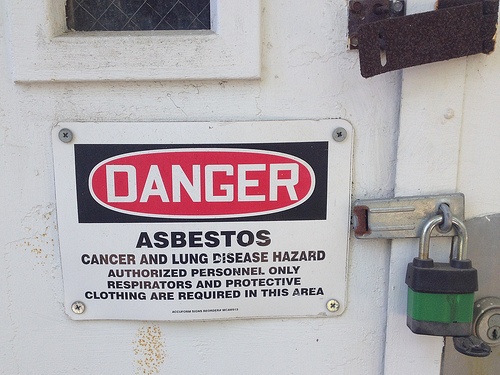On October 29, a large multi-sector group of organizations announced a major initiative to eliminate plastic waste and pollution - the New Plastics Economy Global Commitment. The group is sponsored by the Ellen MacArthur Foundation, and intends to respond to dire projections of the environmental implications of plastic waste with. Informational materials highlight a projection from the United Nations Environment Program (UNEP) that more than 8 million tons of plastics end up in the world’s oceans annually, and that if present trends continue there will be more plastic than fish in the oceans by 2050.
Read MoreAudit, Compliance and Risk Blog
More Jurisdictions Targeting Short-Lived Climate Pollutants
Posted by Jon Elliott on Tue, Dec 11, 2018
Although carbon dioxide (CO2) is the most common and most-discussed greenhouse gas (GHG), it is by no means the only one. And on a per-unit basis, it is by no means the most potent GHG either. Air quality agencies and climate change scientists also focus attention on so-called “short-lived climate pollutant (SLCP)” means an agent that has a relatively short lifetime in the atmosphere, from a few days to a few decades, and a warming influence on the climate that is more potent than that of carbon dioxide. Individual jurisdictions have addressed individual SLCPs, but comprehensive approaches have been limited.In 2014, California legislation assigned that state’s Air Resources Board (ARB) to adopt a SCLP Reduction Strategy (I wrote about the legislation and 2016’s draft strategy here).
Read MoreTags: Environmental risks, Environmental, Greenhouse Gas, ghg, climate change
United States Government Quietly Releases Dramatic New Recommendations For Combating Climate Change
Posted by Jon Elliott on Tue, Dec 04, 2018
While domestic climate politics in the U.S. and Canada generate hot air about the reality and urgency of climate change, climate science proceeds largely on its own pathways, and climate policies to reduce greenhouse gas (GHG) emissions are being proposed and developed by a wide variety of entities. On November 23 – often referred to as “Black Friday” by retailers and shoppers in the U.S., regardless of their attitudes about global warming – the U.S. government’s U.S. Global Change Research Program (USGCRP) delivered urgent recommendations for aggressive policies. This Fourth National Climate Assessment (NCA4) builds on last year’s Climate Science Special Report (which I wrote about here).
Read MoreTags: Business & Legal, Environmental risks, Environmental, Greenhouse Gas, ghg, climate change
On October 24, the US Chemical Safety and Hazard Investigation Board (which uses the truncated acronym CSB) issued a “Call to Action: Combustible Dust” seeking information about what it has long considered a major industrial hazard. Since 1980 CSB has identified hundreds of industrial accidents involving dust that have injured nearly 1000 workers and killed more than one hundred. In 2006 CSB issued 4 formal recommendations to the Occupational Safety and Health Administration (OSHA) to enhance that agency’s regulation of occupational hazards from combustible dust – particularly from possible fires or explosions, with mixed responses.
Read MoreTags: Employer Best Practices, Health & Safety, OSHA, Environmental risks, Environmental
Organizations with facilities that may be subject to routine water infiltration or leaks, or sudden flooding from hurricanes or other events – should consider both sets of information.
Mold Basics
Molds and other fungi are both ubiquitous and plentiful--they have been estimated to make up a quarter of all the biomass on the planet. Molds are found almost everywhere, and can grow on just about any surface, as long as moisture and oxygen are available.
Read MoreTags: Employer Best Practices, Health & Safety, Employee Rights, Environmental risks, Environmental, mold
EPA Proposes To Replace Obama-Era Rules For Coal Fired Power Plants
Posted by Jon Elliott on Tue, Oct 16, 2018
The Trump-era Environmental Protection Agency (EPA) has proposed to repeal and replace another of the Obama-era EPA’s signature efforts to reduce greenhouse gas (GHG) emissions. EPA has now proposed an “Affordable Clean Energy Rule”, to replace the “Clean Energy Plan” adopted in 2015 but stayed by litigation. The new rule softens the mandates in the earlier rule, and offers states more flexibility to design their own efforts to control greenhouse gas (GHG) emissions from existing fossil fuel-fired electricity generating units (EGUs) by eliminating Clean Power Plan requirements that states consider operational changes “outside the fenceline” of the regulated EGUs.
Read MoreTags: Environmental risks, Environmental, EPA, Greenhouse Gas, ghg
Court Reinstates Delayed Accidental Release Prevention Revisions, While EPA Moves To Rescind Them
Posted by Jon Elliott on Tue, Oct 09, 2018
What’s the Current Status of ARP Requirements?
ARP rules specify “regulated substances” and threshold quantities for which onsite incidents could produce harmful offsite consequences, “risk management plan (RMP)” requirements to be instituted by facilities in order to manage those risks, and associated procedural and reporting requirements. In the last week before President Obama left office, EPA completed a multi-year review of its ARP program, responding to his Executive Order Number 13650 from 2013 (I wrote about these revisions here). Then, when President Trump took office, EPA reversed course, repeatedly deferring the effective date of those revisions while the agency reviewed them. In June 2017 EPA issued the latest of these deferrals, citing pending petitions for review by industry groups, and the agency’s need to reconsider the matter to justify deferring the effective date of the (Obama era) revisions for 20 months.In May 2018 EPA completed its review, and published a proposal in the Federal Register to rescind almost all these expansions and return ARP requirement to those in place before 2017 (I summarized the proposal here). EPA also included an alternative proposal that retained a few more elements, and requested public comment on both versions no later than July 30, 2018.
What Has the DC Circuit Just Decided?
The DC Circuit case was brought by environmental and health groups, supported by a number of state governments. They claimed that EPA’s 20 month deferral exceeded the three month limit provided the agency by the CAA. They also noted that the agency had offered no substantial justification for overturning a final decision (the January 2017 revisions) after a multi-year rulemaking.The case was heard by a 3 judge panel of the DC Circuit (interestingly, the panel include Judge Brett Kavanaugh, whose nomination to the US Supreme Court is pending and who took no part in this decision). The remaining judges agreed with the plaintiff’s arguments, found EPA’s delay to be “arbitrary and capricious”, and vacated the deferral rule.
Now What?
With the deferrals gone, the 2017 revisions take effect as issued in the waning days of the Obama administration. After the first two Trump Administration deferrals, the revisions would have been effective in June 2017 with staggered compliance deadlines. Facilities were to ensure coordination of their onsite activities with offsite response agencies by March 2018, institute enhanced RMP activities by March 2021, and formally revise their RMPs by March 2022. On September 21, the Court issued another order directing EPA to begin enforcing the 2017 rules immediately. This means that the coordination requirements identified above are active, and other elements remain on their original phase-in schedule..But EPA’s May 2018 proposal to rescind most of the January 2017 amendments was not part of this case, and so is unaffected. As of this writing EPA has not made any statement about further appeal of the August 2018 court decision, but it’s safe to assume that the agency is proceeding with its own May 2018 proposal – presumably paying attention to the procedural flaws highlighted in the court order. I expect EPA will eventually issue some version of its proposed regulatory roll-back, which will trigger further litigation about whether the dramatic change is justified by the rulemaking record.
Self-Assessment Checklist
Does the organization own or operate any facility with any “stationary source” subject to ARP requirements?
-
If so, has the organization considered the impacts on its operations and compliance position under potential revisions?
Where Can I Go For More Information?
Read MoreTags: Environmental risks, Environmental, EPA, clean water
On April 19, 2018, EPA released their Environmental Justice FY2017 Progress Report. The report commemorates the 25th anniversary of the Office of Environmental Justice (EJ), highlighting progress advancing EJ in minority, low-income, tribal, and indigenous communities. Among their 2017 successes, EPA documented for the first time measurable environmental outcomes in three program areas: fine particulate air pollution (PM2.5), small drinking water systems, and tribal drinking water systems. In each area, EPA measured significant improvements:
Read MoreTags: Environmental risks, Environmental, EPA, clean water, site auditing
EPA is Considering a Regulatory Roadmap For Additional Uses of Asbestos
Posted by Jon Elliott on Tue, Oct 02, 2018
The Environmental Protection Agency (EPA) is expanding its attention to asbestos and its associated hazards, including both existing uses and possible new uses. EPA is undertaking these initiatives under the aegis of extension of its authority under the Toxic Substances Control Act (TSCA), enacted in 2016 Amendments to TSCA -- the “Frank R. Lautenberg Chemical Safety for the 21st Century Act.” (I wrote about provisions relating to existing chemical here, and for new chemicals and new formulations of existing chemicals here).
Read MoreTags: Environmental risks, Environmental, EPA, Hazcom, tsca
OSHA Provides Planning and Response Advice Addressing Hurricanes
Posted by Jon Elliott on Tue, Sep 25, 2018
Federal agencies have marked the beginning of Atlantic hurricane season by reminding employers and the public of the risks from hurricanes, and how to plan for and respond to events. These include a compilation of advisory documents on the Occupational Safety and Health Administration (OSHA) website, which also includes links to additional information by the Federal Emergency Management Agency (FEMA), Centers for Disease Control and Prevention (CDC), and the National Hurricane Center. This information is too late to help people in the Carolinas who’ve been inundated by Florence, but does provide useful reminders.
Read MoreTags: OSHA, Environmental risks, Environmental, EPA










